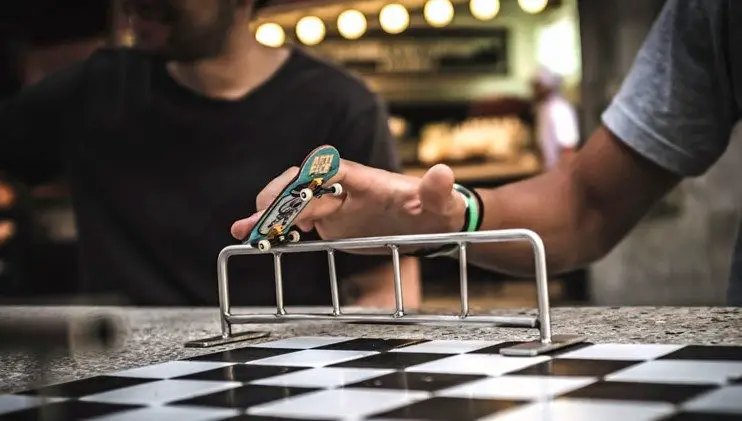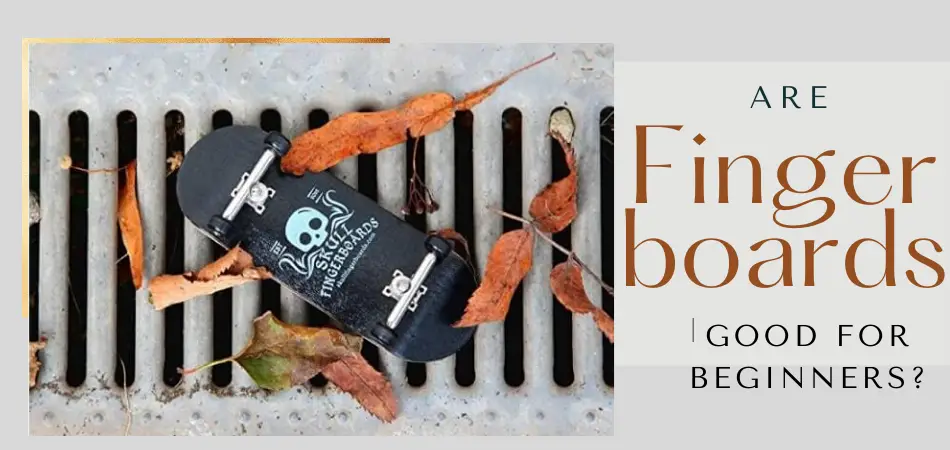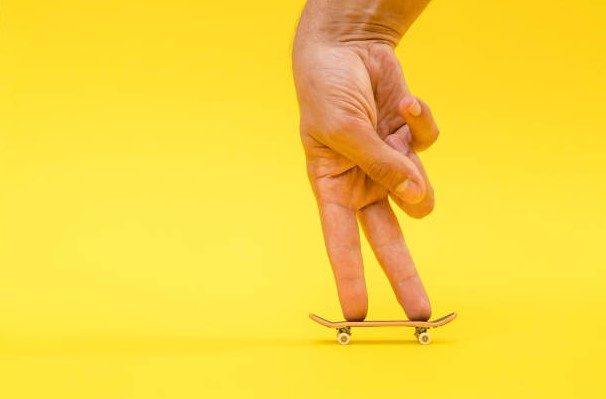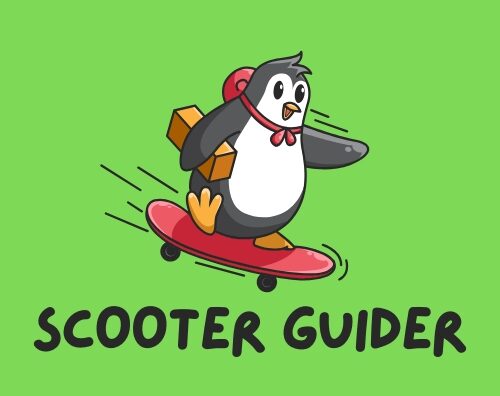If you’re unfamiliar with fingerboarding, the term “fingerboard” comes from the fact that it is similar to riding a skateboard. The difference is, instead of using your feet to perform tricks, you only use your two index and middle fingers to move the board.
The earliest fingerboards were developed by skaters in the 1980s as toys. But the question is, are fingerboards good for beginners? Can you learn fingerboarding today and become good at it quickly? And the answer is Yes! You can start with a fingerboard today, and get better at it, just as early as a regular skateboard. It’s even possible to do tricks within a short period if you can learn the right way.
The following guide is perfect for anyone new to finger boarding and eager to learn more about this exciting and fun sport!
What Is Fingerboarding and How It Works?
The act of “riding” a fingerboard, which is effectively a scaled-down skateboard, is referred to as fingerboarding. When we mention mini skateboard, we are not referring to a teeny-tiny penny board.
Specifically, we’re talking about a skateboard that’s around 10 cm long and 3 cm wide with exactly the same construction. In spite of its little size, the skateboard is capable of doing almost any task.

The index and middle fingers of a fingerboarder operate in the same way as the lead and rear feet of a skateboarder do. They may perform comparable remarkable feats by jumping, flicking, and spinning with those fingers as a skateboarder.
If you’re a beginner to this and know skateboarding, there are variations in this type of board as well! You will find good fingerboards that can be great for you to start with while fingerboards for doing tricks are available too!
Now, let’s see how it works…
If you haven’t started fingerboarding yet, or if you’re just getting started, there are things to consider in order for it to work well especially when you are still trying to learn it.
First: your finger strength
If you’re unable to maintain your grip, you’re not going to make the following step. You can have all the upper body power and fancy technique in the world, but if you can’t hang on, it’s all for naught. Fingerboards are the best training tool for developing finger strength. Bouldering has a role, however the sheer variety of variables (hold form, hold size, hold type, and actions ‘learned’) frequently limits the training value to the fingers.
Fingerboards let you to develop your fingers to their full potential without having to worry about anything else interfering or getting in the way. The only issue is that finger boarding is tedious, antisocial, and difficult.
Second: choosing your fingerboard
This should be easy now. Sharp, jagged fingerboards are a thing of the past. Nowadays, you may expect softened edges, thoughtful materials (wood or a smooth textured resin), and a wide range of nicely made grips from a fingerboard for beginners.
This allows you to practice various grip positions without discomfort. Choose one with the right grips for the activity you want to train. Don’t buy one because it’s cheap or because it has big jugs! A fingerboard is a little investment that will last forever – and will not stink after a few months.
You can also watch here to know more about how it works here:
Are Fingerboards Good For Beginners?
Yes, fingerboarding is great for beginners, but you need to know the right fingerboards and tricks in order for you to play. Before taking any tricks you need to have a good finger exercise for you to be able to perform it well.
A basic fingerboard exercise…
It is hard to describe how to train on a fingerboard in detail in this little post, but here is a very simple practice to get you started.

- Each hand should have a reasonable-sized grasp with four fingers (open handed).
- Hold for 7 seconds, then take a 3 second break. Repeat six more times.
- 3 minutes rest, repeat 2 or 3 times.
- Hang with a modest bend in the arm, ‘engaging’ the arms slightly: relying only on the elbow and shoulder joints might result in harm.
If you’re new to Fingerboarding, there are three basic techniques you’ll need to master before progressing to more difficult tricks on a Fingerboard.
Here are some of the tricks that will help beginners master the micro sport…
1. Shuvit/Pop shuvit
The Shuvit is the first finger board technique you will learn. This is an excellent move to execute off grinds or barriers that you can’t shuvit on. The pop shuvit is a nice starting technique to go into grinds/slides and on to obstacles after mastering the shuvit and the Ollie.
2. Ollie
Next up, the ollie is the most basic Fingerboard technique. Once you can Ollie, you can learn Grinds and Slides, as well as practically every other Fingerboard technique.
3. Kickflip
Coming to flipping, the Kickflip is the first Finger board flip trick to master. In Kickflips and Pop Shuvits, it is a prerequisite for tougher feats like 360 flips and Varial Kickflips. The Kickflip is still used by many “Pros” to enter and exit Slides and Grinds.
How To Get Started With Fingerboarding
Since fingerboarding is a fun micro-sport in which you use just your fingers to “surf” and execute tricks, you don’t need a skate park. Unlike regular size skateboards, you may practice and demonstrate skating feats anywhere, at any time, with nothing more than a pocket-sized fingerboard!
Once you’ve mastered the fundamentals of operating the board with two fingers, simple tricks will come easy, and you’ll be able to demonstrate advanced talents in no time!

These are the methods on how you get started with fingerboarding:
Method 1: Mastering the Basics
Buy a quality fingerboard that fits your hand size. Fingerboards, like skateboards, come in an array of forms and sizes. Find a style you like and try it out using your index and middle fingers on the front and rear lips. The board is perfect for you if it doesn’t feel too hard.
Stack your index and middle fingers in the center. Fingerboarding is all about positioning. Then lay your middle finger on the board’s back lip. While the index finger balances the board, the middle finger propels it forward and accomplishes feats.
Turn the board by squeezing the rear lip. Elevate the front wheels by advancing the fingerboard forward on a flat surface and pressing down with your middle finger on the back lip. Twist your fingers in the direction you want the board to go.
Lift the front of the board while moving it forward. Continue pushing down with your middle finger on the rear of the fingerboard to lift the front. To land the trick, press down on the front of the board with your index finger.
Method 2: Getting the Hang of Air Tricks
Perform an ollie by raising the board up and pressing the back.
Place your middle finger on the back lip of the board and your index finger in the center to lift the front wheels. Press hard on the back to lift it up and balance the board with your middle finger. The board will come to a complete stop on all four wheels!
Perform an ollie and then dangle your index finger in the air. Slip your index finger quickly off one side of the board in the same manner as an ollie.
To heelflip, angulate your middle finger and curl your index finger. Launch the board with your middle finger on the rear lip and your index finger slightly behind the front lip bend. Curl your index finger away from your nose. Your board will then twist sideways once, catching and landing.
Method 3: Learning How to Grind
Do a simple 50-50 grind on a rail with your fingertips. Do an ollie, then catch and land on a rail. You can use a fingerboarding rail, a table, or a piece of wood as a guide. Move the board forward to the end of the rail with mild pressure from both fingertips on each side. Balance is much easier when your hand and fingers are parallel to the board’s surface.
Perform a 5-0 by ollieing onto a rail and manualing it. This grind is more difficult since it incorporates three techniques. Rather than using two fingers to secure the board to the rail, create downward pressure with your rear finger. Maintain little pressure on the rear of your board until it falls on the rail, then complete the trick by bringing your front finger back down to the front lip.
Perform a manual reverse nose grind by pressing on the front. Rather than pressing down on the rear as you would with a 5-0 grind, lay your index finger on the nose and press down to elevate the rear. Your board will be angled backwards rather than forwards, and you may ride it all the way to the end of the rail, where you will push backwards to land.
Frequently Asked Questions (FAQs)
If you still have any queries regarding fingerboarding, the fingerboard FAQs below will assist you:
What Was the First Fingerboard Brand?
Toys were the first fingerboards. Although they looked the part, they were not intended to be ridden. The first rideable boards were developed in the late 1980s by Somerville International’s Fingerboard division.
Is Fingerboarding a Real Sport?
There are fingerboard championships, and the activity is considered as a “sport” demanding physical prowess or expertise. This isn’t a full-fledged sport in most areas, but it’s close enough. There are prizes and honors to be won in this sport that you won’t see on TV or in the Olympics.
Does fingerboarding help skateboarding?
Yes, fingerboarding can be a great way to practice tricks for skateboarding as a minified version of the big game. Since fingerboards are the same as skateboards and need no extra space, keeping up with the practice at any time becomes easier. That way, you can master the art of skateboarding as a whole.
Final Verdict
Fingerboarding may appear strange at first glance. After all, it’s just finger skating, and to the new eyes, it looks to be little more than a passing craze or a way to occupy your idle hands.
However, as the preceding tutorial demonstrates, there is much more to this sport. It’s enjoyable, inexpensive, and the learning curve is nowhere like as high — or as terrible as skateboarding.
If you’re searching for a new activity, now you know how are fingerboards good for beginners. So, consider purchasing a fingerboard and seeing what all the hype is about!
